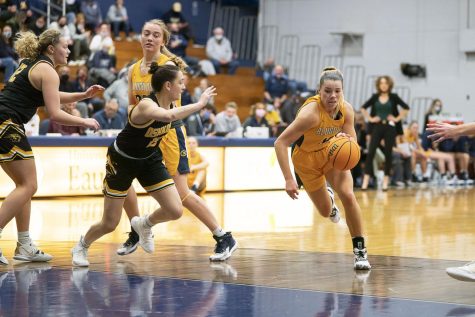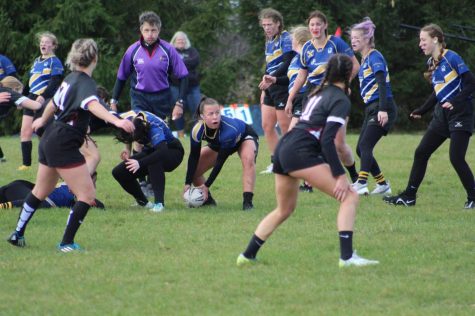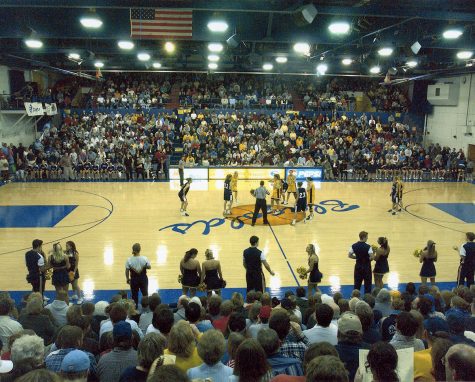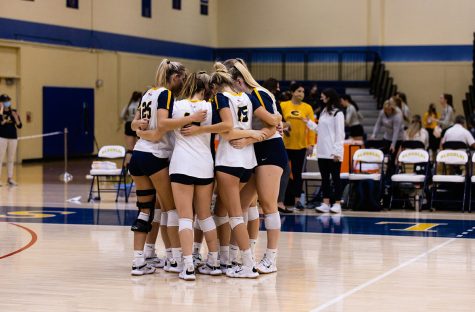Methods to increase student turnout at games
Getting college kids to attend home sporting events is a tall order, and here is what can be done about it
More stories from Parker Reed
Photo by Kelsey Smith
A team’s success can help draw more student attendance, but ultimately it won’t be enough.
Most college students do not regularly attend their respective universities’ athletic events. Attempts have been made to change this, but there are still new and exciting approaches to pursue.
The average college student, for the most part, attends maybe one or two athletic events each year on their campus. This usually included the homecoming football game, and maybe the opening night of a new basketball or hockey season if their hectic schedule permits it.
I don’t believe college-aged individuals have zero interest in sports, in fact, I believe the exact opposite of that is true. On campuses across the nation there are men and women who still eat, breath and sleep sports. But, college doesn’t’ just dump more school work on individuals’ laps, but also drops a daunting work schedule and new responsibilities as well.
On the other hand, there are people who just don’t’ care about sports, and probably won’t be persuaded to attend a game even if Drake is performing the halftime show. But, this article isn’t for them. It is for the people on the borderline between going to a game and supporting their university, and the people that decided against and stay in their dorms “studying” (when everyone already knows that means binge watching Game of Thrones).
College campuses, like UW-Eau Claire are trying a few different methods to try and increase student attendance at games.
The first method Eau Claire is employing is making the game free of charge for all students when they present their student id. This is a great method for attempting to get students to attend, because a lot of students already have to call home to get the two dollars it takes to do a load of laundry in the dorms. This method should be working, but it is not.
The second method Eau Claire is employing is adding support of charities to the night’s agenda. This is a great way to get students to help out with a cause like breast cancer research, and while the stands may be slightly more filled when these events are occurring, there are still plenty of empty seats.This method should be working, but it is not.
Both of those methods are valiant attempts at trying to get college students to attend more athletic events, but the combination of these two methods are still not yielding the payoff that the university needs to sustain its athletic programs. My attempt to solve this is to look to the professional sports teams for guidance.
The first method Eau Claire should be employing to help increase athletic games’ attendance is giving things away.
It is a regular occurrence at professional sports games for the fans to receive something cool and small when they enter the stadium. These things range from t-shirts to hats and even bobble heads at a lot of major league ball parks.
I know many people will claim this is an expense that is far too large for the university to risk, but there is no great reward without risk. This investment could lead to larger potential income for the program and the university and it should be at least attempted, before being dismissed outright.
The second method Eau Claire should be employing to help increase athletic games’ attendance is to have theme nights.
Star Wars night, 80’s night or super hero night are all different theme nights that sports teams could utilize to help gain attention and attendance. People love dressing up and immersing themselves in pop culture, so having a night where fans can do that and also take in some sports is a win win situation.
All of these methods that I’ve previously described sound like game changers, but even if they’re properly put into place there is no guarantee that the outcome will be drastically increased student attendance.
College students have their own lives and their own interests, if student attendance is to truly increase it will likely have to be instigated from within the study body itself.










